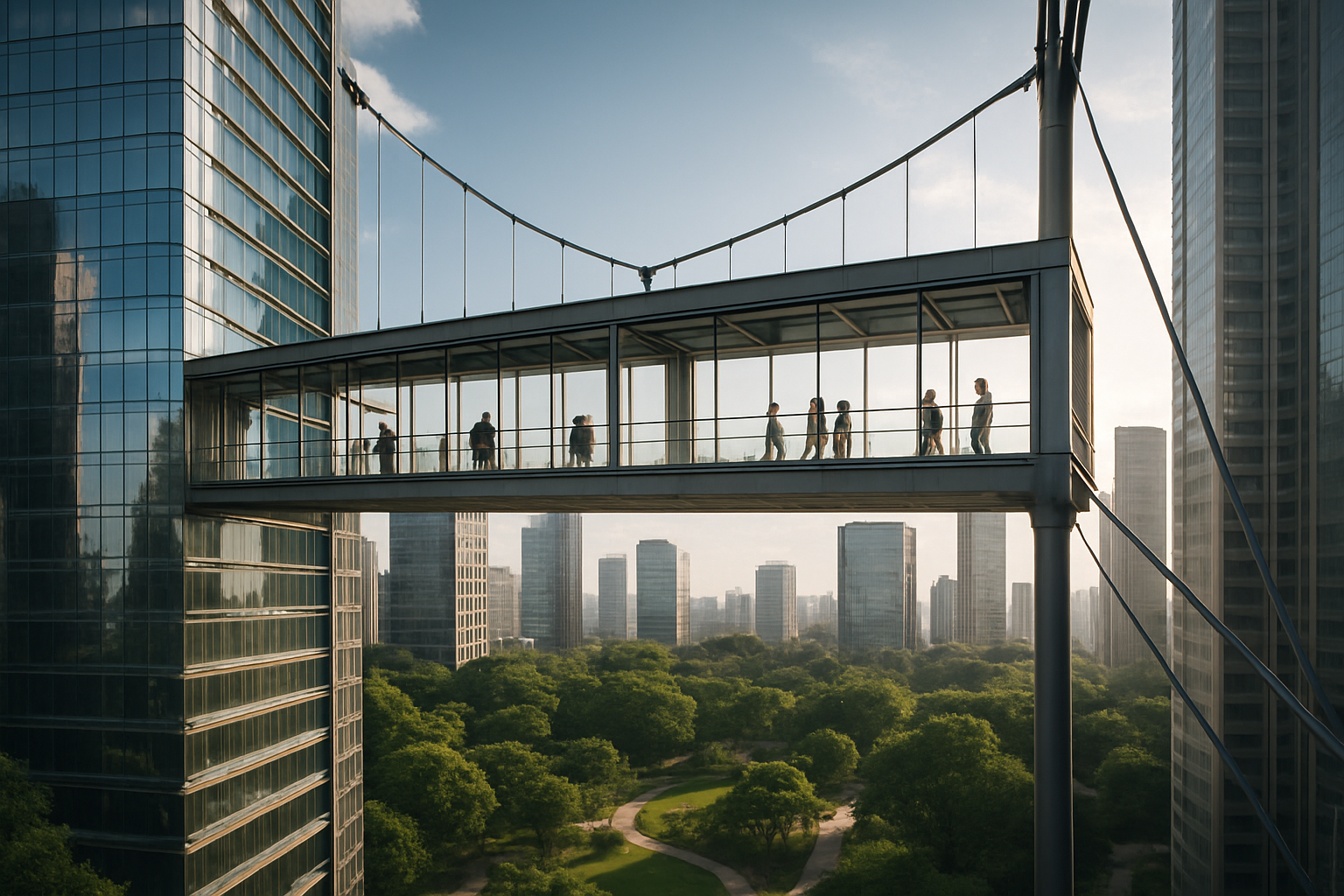Skybridges: Connecting Cities Through Elevated Architecture
Imagine strolling through a lush garden suspended hundreds of feet above bustling city streets, or dining in a restaurant that spans the gap between two skyscrapers. Welcome to the world of skybridges, an innovative architectural trend reshaping urban landscapes and redefining the way we experience cities. These elevated structures are not just functional connectors; they're becoming destinations in their own right, offering unique vantage points and transforming the very fabric of urban life.

Architectural Marvels in the Sky
Today’s skybridges are pushing the boundaries of design and engineering. The Crystal Skybridge in Zhangjiajie, China, spans a breathtaking 430 meters between two cliffs, offering visitors a heart-stopping glass-bottom walkway. In Singapore, the Henderson Waves bridge undulates 36 meters above the ground, its unique wave-like structure providing both shade and seating for pedestrians. These architectural marvels are not just connecting points A to B; they’re creating entirely new spaces for urban dwellers to explore and enjoy.
More Than Just a Bridge
Modern skybridges are multifaceted structures that serve various purposes beyond simple connectivity. Many incorporate green spaces, turning them into elevated parks that provide much-needed nature in dense urban environments. The Salesforce Park in San Francisco, for instance, is a 5.4-acre rooftop park atop the Salesforce Transit Center, complete with walking trails, outdoor amphitheaters, and a diverse array of plant life. This trend towards green skybridges is not only aesthetically pleasing but also contributes to improved air quality and biodiversity in cities.
Redefining Urban Connectivity
Skybridges are revolutionizing the way people move through cities. By creating direct links between buildings and neighborhoods, they’re reducing pedestrian congestion at street level and offering more efficient routes for commuters. In cities like Hong Kong and Bangkok, extensive skybridge networks allow pedestrians to traverse large portions of the city without ever touching the ground. This elevated infrastructure is particularly valuable in areas prone to flooding or extreme weather, providing safe, all-weather passage for residents and visitors alike.
The Future of Urban Planning
As cities continue to grow vertically, skybridges are becoming an integral part of urban planning strategies. They’re not just connecting existing structures; they’re shaping the very way new developments are conceived. Architects and city planners are increasingly incorporating skybridges into their designs from the outset, creating interconnected complexes that blur the lines between individual buildings. This approach is fostering a more integrated, three-dimensional urban fabric that challenges traditional notions of city layout and functionality.
Skybridge Wonders Around the World
-
The Petronas Towers Skybridge in Kuala Lumpur spans 58 meters at a height of 170 meters, offering stunning views of the city.
-
Dubai’s Palm Jumeirah Monorail features a 1.4-kilometer skybridge that connects the artificial island to the mainland.
-
The Linked Hybrid complex in Beijing boasts eight towers connected by a series of skybridges housing various public spaces.
-
Copenhagen’s Bicycle Snake is a dedicated bike skybridge that winds its way through the city, providing a safe and scenic route for cyclists.
-
The SkyBridge at Gatlinburg in Tennessee is North America’s longest pedestrian suspension bridge, stretching 680 feet across a deep valley.
As cities evolve to meet the challenges of the 21st century, skybridges stand as a testament to human ingenuity and our ongoing quest to reshape our urban environments. These elevated structures are more than just connectors; they’re reimagining the very fabric of our cities, creating new spaces for community, commerce, and contemplation high above the streets below. As we look to the future of urban design, skybridges will undoubtedly play a crucial role in creating more connected, sustainable, and vibrant cities for generations to come.





